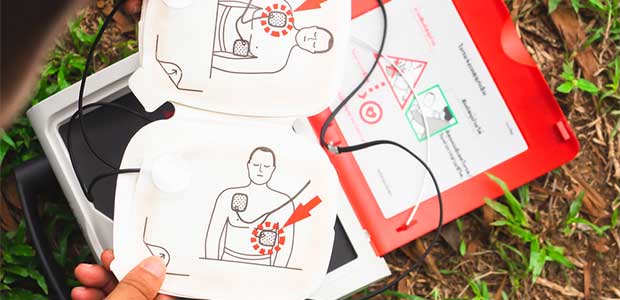
Page 2 of 3
When Minutes Matter: CPR and AEDs at Work
The new format also emphasizes hands-on training where students can work on their technique and practice timing and pace. With up to 50 percent more time now spent applying skills, instructors can offer more personalized and effective evaluation that truly hones ability and knowledge.
Preparation Prevents Suboptimal Performance
Practice and repetition can help save lives, but they are only one part of the equation when responding to cardiac arrest. For every minute that a non-responsive coworker doesn’t receive effective defibrillation, chances of survival plummet by 10 percent.5 Having an AED in the workplace can make a defining difference in a patient’s outcome.
Setting up an AED program takes planning but is not difficult. First, designate a program director who will check and verify state requirements. Then the program director will involve medical professionals to offer guidance.
For example, every AED program should be integrated with the local EMS system since these will most likely be the first medical professionals on the scene. You’ll also want to ensure that a physician plays a role in your program’s set-up, be it making recommendations on training plans, policies and procedures or evaluating the use of an AED to recommend improvements.
Next, choose an AED and ensure that any manufacturer with whom you work offers sufficient support:
Technical support. Is there an 800 number to call for questions and are people available to respond in a timely fashion?
Program implementation. This may include placement of the device, medical authorization, registration and special training.
Ongoing maintenance. You want the AED to work when it is needed, so regular inspections are a must. A staff member could assume this responsibility or you could hire a service that monitors your AEDs for operational readiness.
Finally, develop a training plan and use it to raise awareness of the AED program. Employees should know the locations of all AEDs. And, although an AED only requires that the user turn it on and follow the audio prompts, training increases the confidence of responders.
This article originally appeared in the September 1, 2022 issue of Occupational Health & Safety.